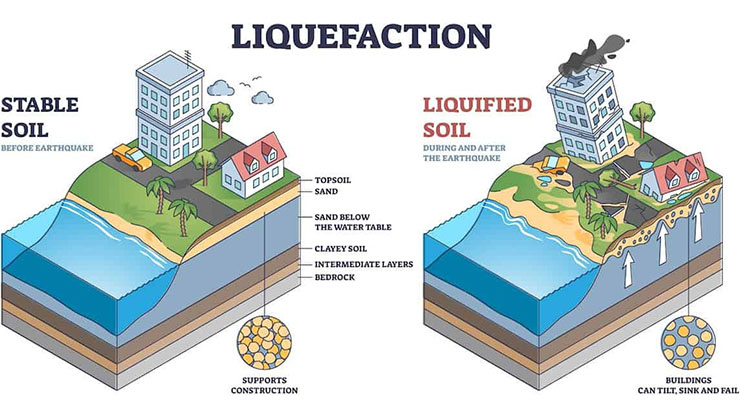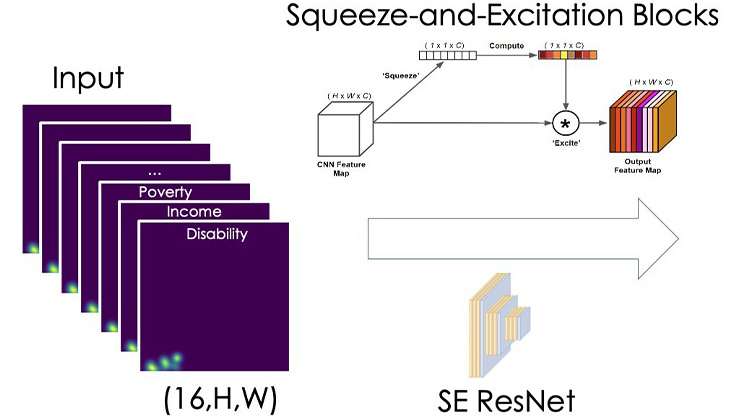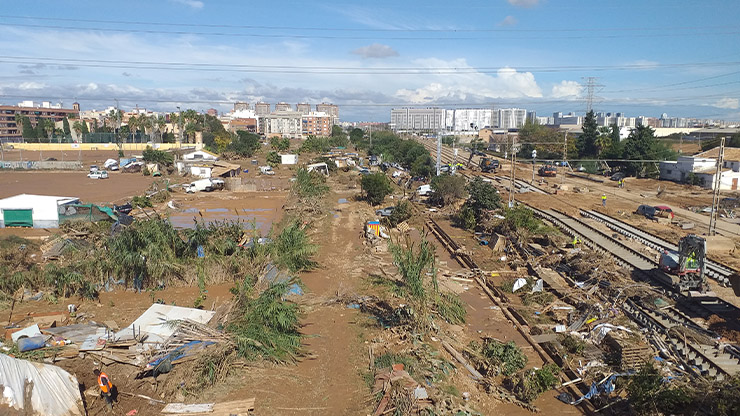Undergraduate Project Explores Risk Assessment in the Context of Natural Disasters
The U.S. Federal Emergency Management Agency (FEMA)—part of the U.S. Department of Homeland Security (DHS)—is a government agency that coordinates responses to significant disasters (natural or manmade) in the U.S. that overwhelm the resources of local and state authorities. It seeks to help communities prepare for possible risks and subsequently offers federal assistance to individuals, families, and business both during and after a disaster event.
FEMA’s National Risk Index—which includes data about expected annual losses due to individual natural hazards, as well as information about social vulnerability and community resilience—can help populations prepare for possible natural disasters. During a minisymposium presentation at the Third Joint SIAM/CAIMS Annual Meetings, which are currently taking place in Montréal, Québec, Canada, David Thompson of the University of Massachusetts Lowell spoke about a unique student-driven research project that used the National Risk Index to explore risk assessment for various U.S. counties. Thompson, who is currently pursuing an EdD, is a mathematics instructor at Glasgow High School in Delaware who earned his bachelor's and master's degrees in secondary mathematics education at Towson University. He is passionate about real-world mathematics applications and a proponent of mathematical achievement through self-efficacy.

The project in question is centered around a quantitative data literacy activity about the costs of natural hazards called “Big Blow can Blow the Budget.” This educational module was developed by Diana Cheng of Towson and Angelyn Flowers of the University of the District of Columbia; it was funded by the DHS via Rutgers University’s “Reconnect” program. The exercise is meant to inspire a “notice and wonder” approach that allows participants to examine the presented information and ask questions about their observations — thus exercising their curiosity and connecting with the material.
Thompson began by outlining the benefits of socially oriented curricula, which empower students to build an informed society, relate mathematics to their own communities, confront and solve practical challenges, and better understand mathematics as a tool for social change. Such lessons also increase student exposure to important social justice issues — in this case, natural disasters in the framework of climate change. “Students will examine diversity in social, cultural, political, and historical contexts, rather than in ways that are superficial or simplified,” Thompson said. He then introduced five steps for the mathematical modeling of social-justice-based problems [1]:
- Interpreting the problem and underlying social justice issue
- Proposing approaches to address the social justice problem
- Mathematizing the situation and working mathematically
- Validating the solution against contextual constraints
- Applying the solution to a social justice context.
Next, Thompson detailed the project itself, which was joint work with then-high-school student Bryce Benjamin (now a computer science major at Rutgers University) and a group of Cheng’s undergraduate pre-service teachers at Towson. Thompson is a longtime mentor to Benjamin, and the duo initiated the study as a high school summer research opportunity.
Benjamin began by reviewing a 2023 National Risk Index map and taking note of interesting patterns for disaster occurrence in different regions of the U.S. (see Figure 1). He immediately identified natural disaster hotspots in places like New York, Seattle, Palm Beach, Miami, San Francisco, and Los Angeles — all of which experience potentially deadly phenomena that range from hurricanes and floods to heat waves and earthquakes.

Benjamin compared expected annual loss (EAL) information across these hotspots to analyze recovery costs in vulnerable areas over time. EAL represents the average economic loss in dollars from hazards each year. One can calculate it as follows:
\[ \textrm{EAL}=\textrm{Exposure} \times \textrm{annualized frequency} \times \textrm{historic loss rate}.\]
Here, exposure denotes the value of buildings, population, or agriculture that are potentially exposed to natural hazards. Annualized frequency is the frequency at which a natural hazard occurs each year, and historic loss is the estimated parentage of the building, population, and agriculture value that is predicted to be lost during natural hazard occurrence.
Given this calculation, Los Angeles County had the highest EAL (see Figure 2). “The most significant contributor to this EAL value was earthquakes, valued at $3.78 billion,” Thompson said. This was followed by wildfire, tornado, and heat wave.

Like Benjamin, the Towson students pursued a similar “notice and wonder” evaluation during several prerequisite classes; they presented their findings at Towson’s Undergraduate Math Conference in April 2024. Ultimately, the students collectively offered governmental recommendations based on their analyses. “Our suggestion to decrease the costs of disasters is to have legislation that focuses on preventing the costliest disasters,” Thompson said. “For example, all homes in Miami built after 2025 should be able to withstand a category 3 hurricane.” The students also advocated for legislation to increase infrastructure spending and fix deteriorating infrastructure across the U.S., as doing so would greatly reduce the costs of disasters.
Thompson concluded by endorsing the benefits of risk assessment analysis and other social-justice-oriented topics. “Mathematics is a gateway for further STEM participation,” he said.” “The point is to engage the students in real-world situations where they can analyze data. This yielded positive gains in pre-service teachers’ learning to teach for social justice beliefs.”
References
[1] Jung, H., & Brand, S. (2021). Student actions for social justice-oriented mathematical tasks. Mathematics teacher: Learning and teaching PK-12, 114(5), 378-385.
About the Author
Lina Sorg
Managing editor, SIAM News
Lina Sorg is the managing editor of SIAM News.

Stay Up-to-Date with Email Alerts
Sign up for our monthly newsletter and emails about other topics of your choosing.






